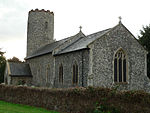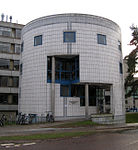National Collection of Yeast Cultures
The National Collection of Yeast Cultures (NCYC) is a yeast culture collection, established in 1951, and working under the Budapest Treaty for the storage of over 4,000 yeast cultures. Located at the Institute of Food Research in Norwich, England, since 1980. NCYC is part funded by the UK government but provides a commercial service to identify, store and supply yeast cultures. As well as the traditional baking and brewing yeast Saccharomyces cerevisiae, this culture collection also contains hundreds of non-pathogenic yeast species. The yeasts are kept frozen under liquid nitrogen or freeze-dried in glass ampoules. To ensure the collection's safety, it is also duplicated and stored off site. Yeasts have been stored and revived successfully decades later.
Excerpt from the Wikipedia article National Collection of Yeast Cultures (License: CC BY-SA 3.0, Authors).National Collection of Yeast Cultures
Colney Lane, South Norfolk
Geographical coordinates (GPS) Address Nearby Places Show on map
Geographical coordinates (GPS)
| Latitude | Longitude |
|---|---|
| N 52.62382 ° | E 1.224523 ° |
Address
Visitors Car Park
Colney Lane
NR4 7UH South Norfolk
England, United Kingdom
Open on Google Maps








